I’m almost there. Just a few more reviews to go before I finally make the full pivot to gear designed for smaller spaces and more scaled-down systems. It’s been a long time coming. After 16 years in the same spot, I’m packing up, moving shop, and diving headfirst into the next chapter—one that involves less “let’s rattle the neighbor’s fillings” and more “how do we make this sound great in a 13 x10 room without wrecking the place?”
Even if the next stop is technically walkable from where I’ve been planted all these years, it’s still a bit daunting. Change always is. The secondary place in Florida will be the proving ground for in-wall and in-ceiling setups, outdoor speakers that don’t suck, and compact gear that can still throw a punch. And yes, the cabin is coming—and that’ll bring its own flavor of hi-fi minimalism.
Think of this as the Bob Vila phase of my audiophile life: fewer towering monoliths of sound, more thoughtful integration and actual livability.
I’ve been in full-on consolidation mode—trying to figure out what stays, what goes to the kids, and what can actually work together in a smaller space using the gear I already own. Turns out, I have way too much stuff. And getting rid of it? A hell of a lot harder than I expected. There’s a weird emotional calculus to deciding which amp or stack of records makes the cut, especially when you’ve been collecting this long.
The book, movie, and music collection is getting split across three different locations. I’ve accepted the fact that I’ll probably need a few oversized duffel bags and backpacks just to haul stuff back and forth when I suddenly decide I need to rewatch something on Blu-ray or hear that one obscure jazz pressing in the right room.
I’m also officially bolting from the Roon ecosystem. It’s been a good run, but I’m going lean and mean with TIDAL Connect and Qobuz Connect—direct through the apps on my phone, laptop, and tablet. Simple. Clean. No server maintenance.
The headphone collection is thinning out—on purpose this time. Less gear, more intention. Smaller footprint, fewer duplicates, and a lot more actual listening instead of just stockpiling. Turns out downsizing can be a good kind of reckoning. Feels like I’m reconnecting with what made me fall in love with music in the first place.
For the foreseeable future, it’s going to be a steady diet of Meze, Grado, and Beyerdynamic. Everything else? My kids cleaned me out—Bowers & Wilkins, Periodic, HiFiMAN, Audeze, Sennheiser—you name it, they claimed it.
All this gear is starting to feel about as practical as those maddening European drink bottle caps — the ones that dangle there like some eco-guilt noose while you try to chug your overpriced sparkling water in peace. The irony? Audiophile gear is supposed to simplify the experience, not dangle off the desk like a reminder of poor decisions and diminishing shelf space. But here we are, knee-deep in beautifully machined boxes, all of them “essential,” none of them stackable, and somehow every cable still manages to tangle itself overnight.
When Space Is Tight: Why the NITSCH x Schiit Magni Piety Is the Ultimate Compact Amp Solution
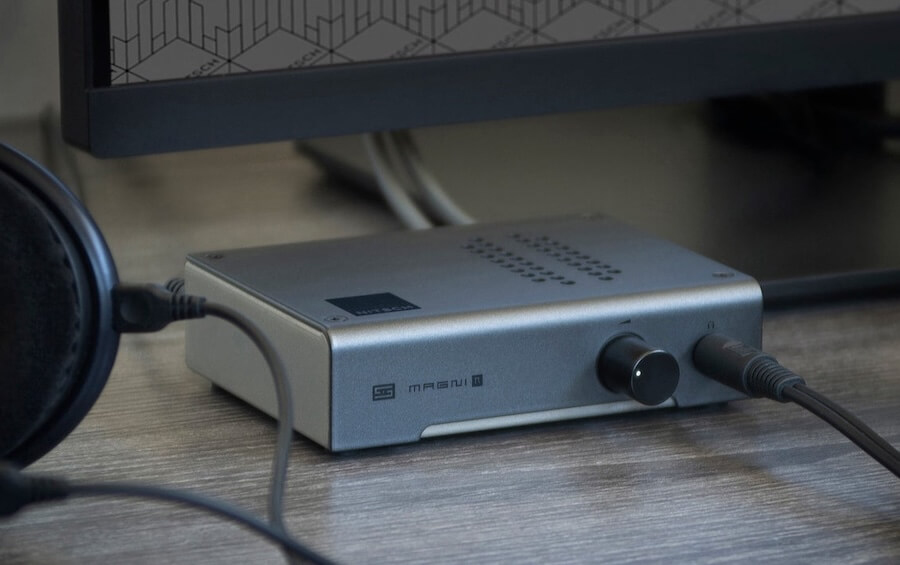
Been a loyal Schiit Audio customer since day one, and there’s no way I’m jumping ship now—they’ve always treated me right. My Ragnarok 2 still holds the line in the Florida dining room, driving a pair of Magnepan LRS that I’ve stubbornly kept in the system. No, they don’t shake the drywall or thump like a frat house subwoofer, but here’s the thing—when properly set up, they vanish. Completely.
And what’s left is this unnerving sense of presence that doesn’t rely on volume to make its point. It’s a masterclass in restraint. High-end audio doesn’t need to shout to impress—sometimes it just needs to whisper the truth in a way that stops you mid-sip of your overpriced sparkling water.
As Bosch might say, “If the system tells you the truth at low volume, you can trust it when things get loud.”
The Schiit Magni series has also been a constant companion on this audio journey, so when the NITSCH x Schiit Magni Piety popped up as an option for my cramped NJ desktop and home office in Florida, it made perfect sense to order one before they sold out. For the NJ setup, I’m also using the Bryston BHA-1 headphone amp and a rotation of DACs to keep things sharp and flexible.
Some quick backstory for those scratching their heads over who—or what—NITSCH actually is: think of it as the audiophile side hustle you wish you had the guts (and circuit knowledge) to start. NITSCH is a passion project of this guy named “Christian”—part curator, part collaborator, part chaos agent in the best way. Instead of cranking out gear at scale, NITSCH focuses on limited-run audio gear that breaks the mold, often in collaboration with some of the best minds in the game (like, say, Schiit). If Schiit is the rock-solid anchor, NITSCH is the rogue wave that makes things interesting.
While rolling through SoCal, Christian stopped by Schiit’s Valencia HQ and linked up with co-founder Jason Stoddard. Somewhere between chatting and nerding out, he got ears on a curious little amp. It looked like your typical Magni, but under the hood, it was channeling the spirit of the Jotunheim 2. They dubbed it the “Apostolic Edition” at the time—because of course they did.
Thing is, it relied on parts that made mass production a no-go for Schiit. But Christian saw an opportunity: maybe not mass-market, but a limited run? Enter NITSCH. The Magni Piety was born—oddball circuit, niche appeal, and a killer excuse to do something different.
Design-wise, it’s a clever spin on the Continuity circuit from the Jotunheim 2. The output stage is stacked with transistors, giving it a bit of that tube-y character without the actual tubes. Translation: it’s solid-state with manners—half the size of a Jot 2, easier to live with, and still delivers that slightly warm, slightly weird charm.
I managed to snag one back in Q1—either through sheer luck or the audio gods taking pity on me—before they slammed the door shut on new orders. As of now, they’re completely sold out, and if you’re hoping to score one, you’re probably looking at the tail end of 2025 or maybe Q1 2026. Patience is a virtue. Or a cruel joke.
Why do we need this Magni? Because this is the Magni some of us always wanted but didn’t know existed. The NITSCH x Schiit Magni Piety keeps the solid-state convenience, but adds a surprising hint of tube-like warmth and texture. It’s not a replacement—it’s a twist. Try both gain settings, swap in different headphones. You might raise an eyebrow.
How does it pull that off? Jason Stoddard managed to tweak Schiit’s Continuity circuit (normally used in the Jotunheim 2) to fit inside the tiny Magni chassis. The result is a Class A, transistor-heavy amp that behaves just enough like a triode to make you double-take.
Why isn’t this on the Schiit site? Because Magni models are normally mass-produced, and the Piety uses hard-to-source parts that make large-scale production a no-go. Enter NITSCH—whose whole thing is building the gear that wouldn’t otherwise exist.
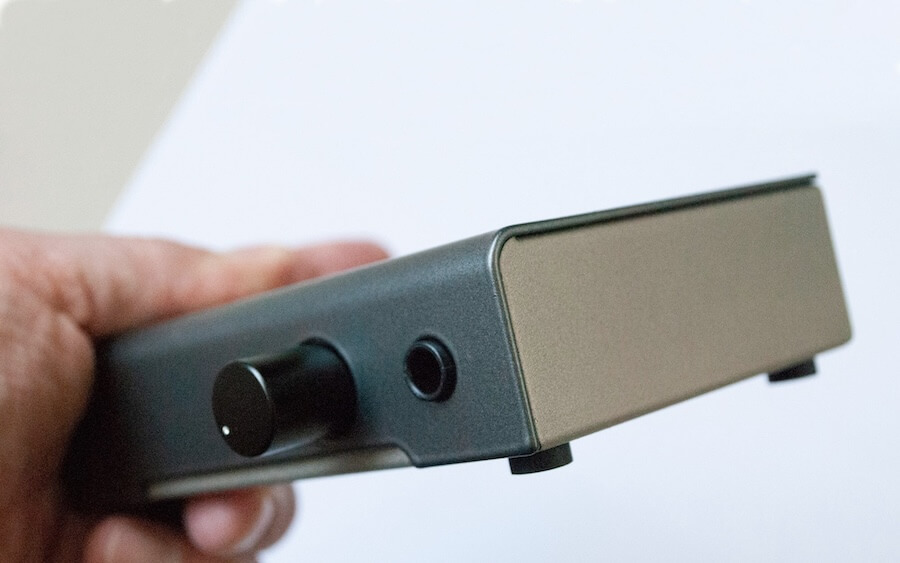
NITSCH x Schiit Magni Piety – What You’re Really Getting
- Frequency Response: Dead flat from 20Hz to 20kHz. Seriously. Within +/- 0.06dB, so your music comes through exactly as it should—no boosted bass or hyped treble.
- Power Output (RMS) — this little amp delivers surprising punch:
- 16 ohms: 1.2W per channel
- 32 ohms: 1W per channel
- 50 ohms: 0.8W
- 300 ohms: 400mW
- 600 ohms: 200mW
- THD+N: Less than 0.013% on high gain, and less than 0.009% on low gain
- IMD: Well under 0.0012%—translation: you’ll hear your music, not the amp
- Signal-to-Noise Ratio: 94dB (high gain), 104dB (low gain). Quiet. Like “midnight in the desert” quiet.
- Crosstalk: -90dB across the full range, so your left and right channels stay properly separated. No smeared imaging here.
- Output Impedance: Under 0.6 ohms—excellent for maintaining headphone control and frequency response.
- Input Impedance: 50k ohms. Easy to drive from just about any source—DACs, phones, CD players… you name it.
- Gain Settings: Two options via a rear switch:
- Low gain: 1.8x
- High gain: 6.3x
- Use low for sensitive headphones or IEMs, high for the big boys.
- Topology (Nerd Section): Fully discrete, with a massively paralleled transistor design. It’s a fresh spin on Schiit’s “Continuity” circuit from the Jotunheim 2, tweaked to add a little tube-like sweetness.
- Protection: Standard muting relay and DC fail-safe. If something goes sideways, it’s not taking your headphones with it.
- Power Supply: Uses a standard “wall wart” transformer (14–16VAC, 1A). Not glamorous, but it works.
- Power Consumption: A measly 6 watts. Your phone charger probably pulls more.
- Size: 5″ wide x 3.5″ deep x 1.25″ tall
- Weight: 2 lbs
Expect a full breakdown once I’ve had a chance to pair the Piety with a few more DACs, but early impressions are promising — and different from my stock Magni Unity in a few meaningful ways.
It’s got less raw power, but greater dynamic punch, which kind of makes you do a double take. It’s definitely not as neutral as the Unity — and that’s not a bad thing depending on your headphones and your tastes.
Now, let’s address the “sounds like a 300B triode amp” chatter. I’ve owned three solid 300B amps over the years — Wavelength Audio, Fi, and Art Audio. This isn’t that. It doesn’t sound like a 300B amp. Let’s not get carried away.
That said — texture? Check. Weight? Yup. It adds some welcome meat to the bones, especially if you’re using headphones on the more analytical side. For instance, Grado and Beyerdynamic cans become a lot more listenable — there’s a slight warmth and forgiveness that works well without completely veiling detail.
The Meze 99 Classics? Not a great match. The coloration goes a little too far, and the closed-back design just doesn’t open up enough with this amp. These headphones need more transparency and a bit more juice to really breathe.
But for under $200? Absolutely worth it. It’s not endgame, but it’s a hell of a fun ride so far. More to come.
For more information: nitschsound.com
Marantz M1: When Your Wi-Fi Is Stronger Than Your Willpower to Avoid New Gear

Oh Marantz, what have thy done indeed? Just when the sub-$1,000 network amplifier category was already a cage match of spec sheets and app gimmicks, along comes the M1 with that unmistakable Marantz swagger. Sure, the WiiM Amp Ultra and Eversolo Play might dazzle you with more HDMI ports, coaxial inputs, and firmware update promises than a Tesla — but do they offer this much soul? Doubtful. The M1 doesn’t try to win on sheer features; it leans hard into musicality, grace, and that warm, analog-adjacent Marantz vibe that’s more Frank Sinatra than Silicon Valley.
The Marantz Model M1 is Marantz’s latest entry into the world of compact wireless streaming amplifiers—and while it might look small, it’s designed to handle a lot. Just add speakers, and you’ve got a full-blown hi-res streaming system in a single, slim box.
Power-wise, you’re looking at 100 watts per channel with a very low distortion spec (0.005% THD), and a subwoofer output with adjustable crossover points and a ±15dB level trim. That means you can actually dial in your 2.1 setup instead of just slapping a sub in and hoping for the best.
The M1 stays in the digital domain from start to finish, supporting hi-res PCM up to 24-bit/192kHz and DSD playback. Whether you’re pulling music from the cloud, your network, or a USB stick jammed into the back, it’s built to deliver clean, detailed playback.
Connectivity includes Bluetooth, Spotify Connect, AirPlay 2, and HEOS, Marantz’s own multi-room streaming platform that can control up to 32 zones. HEOS handles everything from streaming to integration with home automation platforms like Control4, URC, and Crestron. Roon Ready and TIDAL Connect support are listed as “coming soon,” which has been the HEOS party line for a while now—but fingers crossed.

TV lovers: you’ll be happy to know there’s HDMI eARC onboard. That means your TV remote can control volume and power. And if you’re going to place the M1 out of sight (think behind a wall-mounted TV or inside a cabinet), the HEOS app lets you keep full control. Bonus: it’ll learn IR commands from third-party remotes, if you prefer to go old school.
Quick heads-up for vinyl fans: the M1 doesn’t have a built-in phono stage. You’ll need either a turntable with one built-in or a separate phono preamp plugged into the analog input.
Bottom line? The Marantz Model M1 checks a lot of boxes for those who want a compact, all-in-one streaming amplifier with serious system-building potential. Whether you’re using it in a stereo setup, as a soundbar replacement, or as part of a whole-home audio system, it’s got the chops.
Thinking about pairing the Marantz M1 with the Q Acoustics 3020c, Acoustic Energy AE100 MKII, or DALI Spektor 2—all solid compact bookshelf options. Maybe even mix and match all three in the same office setup with a subwoofer to cover the full range without crowding the space.
Where to buy: $1,000 at Crutchfield | Amazon
Quad 3 Integrated Amp: Straight Outta 1961 with Modern Tech and That Timeless Orange Glow
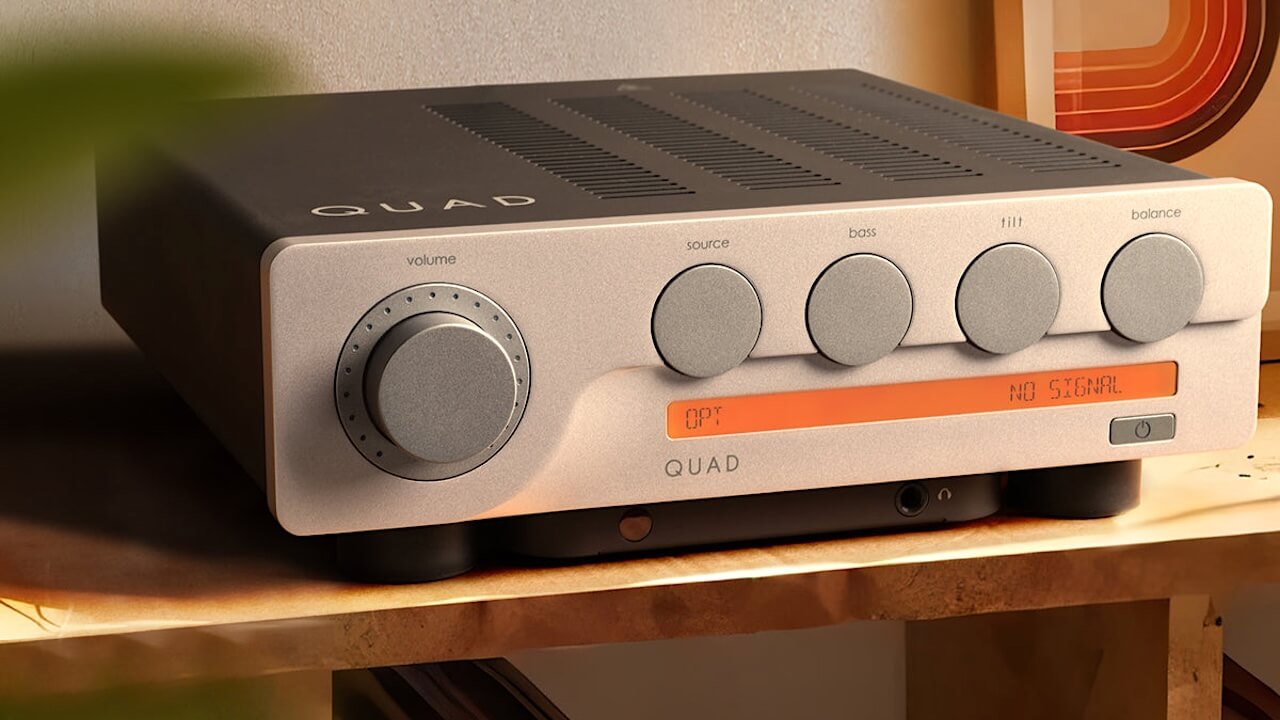
Vintage vibes, modern guts — that’s the Quad 3 integrated amp for you. It’s rocking Class A/B amps rated at 65 watts per channel into 8 ohms, wrapped in a chassis that looks like it time-traveled straight from 1961. But don’t be fooled by the retro charm; inside beats Quad’s “Complementary Feedback” topology, which isn’t just a fancy phrase but a clever way to keep distortion down and temperatures reasonable when you push it hard.
Each major circuit section has its own low-noise power supply, which basically means less hiss and tighter detail — expanding the soundstage to something so roomy you might mistake it for the parking lot outside a Bentley dealership. The digital heart? An ESS ES9038Q2M Sabre DAC, the kind of chip you usually find in gear that costs way more.
Paired with HyperStream II tech and a custom jitter eliminator, this beast slashes noise and cranks up detail. It’ll happily handle hi-res PCM up to 32-bit/768kHz and DSD512 without breaking a sweat.
For those still clinging to MQA after TIDAL’s recent shuffles, yes, the Quad 3 has full MQA decoding onboard, plus five digital filter settings so you can tinker your way through digital disasters or masterpieces alike.

Inputs? This thing’s got everything except a rotary dial for your cat. Coaxial, optical, USB-B, and HDMI ARC for when you want your amp doubling as a TV audio commander without rummaging through the usual remote graveyard. And analog lovers aren’t left in the cold — two RCA line-level inputs plus a moving magnet phono stage for spinning your vinyl with pride.
You can read more about it here.
Could this be the “right” amplifier for the Q Acoustics 5040? We shall soon find out.
Ruark R810 Radiogram Redefines the Modern Stereo Console for Design-Savvy Audiophiles

Ruark’s not breaking new ground with the R810—just doing it better than most. I’ve spent time with the Symbol Audio Record Console, which has been turning heads (and emptying wallets) for over a decade. It’s a beautiful piece of craftsmanship and I was lucky enough to review it when it first hit the market. But let’s be honest: with a price tag hovering around $30,000, it’s never really been a mass-market proposition. That kind of coin gets you a custom tube amplifier, a decent turntable, hemp-cone coaxial speakers, a built-in subwoofer, and a nearly 300-pound mid-century modern cabinet built like a tank.
The problem? Most people who actually care about sound—and furniture—aren’t willing to fork over luxury car money for what’s essentially a high-end stereo console. That’s where Ruark has nailed it. The R810 delivers the furniture-grade aesthetic, integrated electronics, and streamlined usability for less than a fifth of the price. It’s not just a conversation piece—it’s an invitation for other audio brands to wake up and start thinking seriously about design, integration, and how to meet mainstream consumers where they actually live.
If you’re looking at the Ruark R810 and wondering, “Is this just another pretty face with speakers?”—the answer is no. It’s a full-fledged, modern hi-fi system disguised as mid-century furniture, and it’s loaded with features that most people won’t expect from something that looks this clean.
Start with the speaker setup. You’re getting two silk dome tweeters, two 100mm mid-bass drivers, and a serious 200mm subwoofer tucked into a sealed enclosure—all custom-made by Ruark. And it’s powered by a discrete Class A/B amplifier that delivers 180 watts of real RMS power across five channels. That’s not class D guesswork; it’s proper amplification with actual headroom. The R810 isn’t just loud—it’s controlled and capable in a way that most all-in-one systems can’t touch.
It’s not just for music nerds either. The R810 plays nice with just about everything: HDMI ARC/eARC for your TV, analog RCA for your turntable (yes, it has a real moving magnet phono stage), Toslink optical, and USB-C for digital files. Want to stream? Pick your poison: Apple AirPlay 2, Chromecast, Spotify Connect, TIDAL Connect, DLNA, and even Bluetooth 5.1 with aptX HD. If you’re old-school (or just have decent FM stations where you live), it also includes DAB/DAB+, FM, and internet radio. And for those with dusty CD collections, Ruark lets you connect an external USB CD drive.
Ruark’s smart here—not overloading you with 100 apps to control every little thing. Use the Spotify app, BBC Sounds, TIDAL, or whatever platform you prefer. Multiroom? It’s in there, too, thanks to Chromecast and AirPlay integration.

Physically, the cabinet is a work of art: fused walnut veneer or soft grey lacquer with polished chrome legs. And it’s not some MDF box dressed up to look the part—it weighs 67 lbs fully assembled with the stand, so it’s solid and stable, even when pushing bass into a room.
And one more thing: it comes with an actual remote that doesn’t look like it came from a cable box in 2003. Ruark calls it the RotoDial, and it’s Bluetooth LE rechargeable, matching the overall high-end design language of the piece.
Long story short? The R810 isn’t trying to be a vintage-inspired gimmick. It’s a legitimate all-in-one solution that merges audiophile DNA with real-world usability—something more high-end brands should be paying attention to.
Having just reviewed the Ruark R1 and currently listening to the R410 paired with their slick little R-CD100 CD player, I have to admit — the R810 stereo console hits me on an entirely different frequency. This isn’t just a piece of gear — this is the kind of hi-fi furniture that makes you rethink your living space… or at least the master bedroom.
The moment I saw it, my brain went into redecorating mode: stick this under the 55″ TV, drop one of my restored Thorens turntables on top (probably the one that just happens to match the walnut finish like the Metaverse willed it into existence), and call it a day. You don’t need a stack of components. You don’t need a rat’s nest of cables. The R810 is the system — and it’s got enough presence to dominate the room both visually and sonically without acting like it’s doing you a favor.
If you’ve heard the R410, you already know what Ruark’s voicing is all about: clean detail, warmth where it counts, and just enough punch to remind you it’s not messing around. Now imagine all of that — but on steroids. A bigger cabinet. A wider soundstage. A literal subwoofer hiding inside. This isn’t your rich uncle’s radiogram. It’s what happens when British industrial design gets into a fistfight with German pragmatism and the result is a sonic velvet glove with a brass knuckle inside.
It’s accurate. It’s dynamic. And unlike most so-called “audiophile furniture,” it’s not trying to be cute or coy. The R810 is what more brands should be doing — creating systems that people actually want to see, use, and keep for more than five minutes before shoving them in a closet labeled “upgrades.”
So buckle up, buttercups. If you’re the kind of audiophile who needs constant hand-holding, falls into forum echo chambers about $1,000 Ethernet cables blessed by monks, or obsesses over every meaningless “mk-whatever” upgrade from your favorite speaker brand — you might want to take the next exit. This ride isn’t for you.
We’re here for the ones who actually listen — who remember why this obsession started in the first place. It’s not about flexing your latest DAC stack on Reddit. It’s about the music, the experience, and yes, sometimes laughing at how ridiculous this hobby can be. As His Bobness once warned, “The times they are a-changin’,” and frankly, it’s about bloody time.
Learn more about the Ruark R810 here.
Related Reading:
- Ruark R1 Bluetooth Radio Review: For Those Who Think A Bose Is Something The Butler Uses
- Cambridge Audio’s MXW70 is So Compact It Might Just Start a Class D Rebellion in Your Sock Drawer
- Vintage Turntables: Smart Buy Or Just Nostalgia In A Wood Veneer Suit?

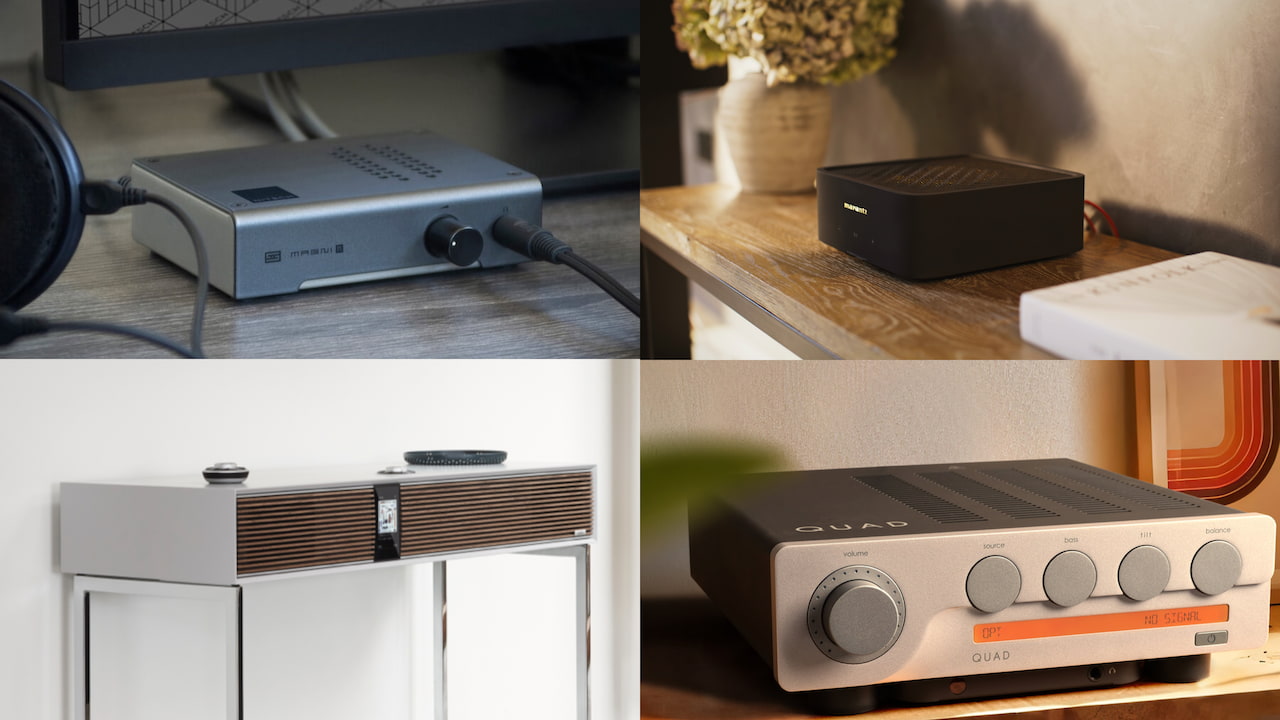



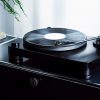











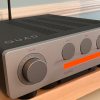


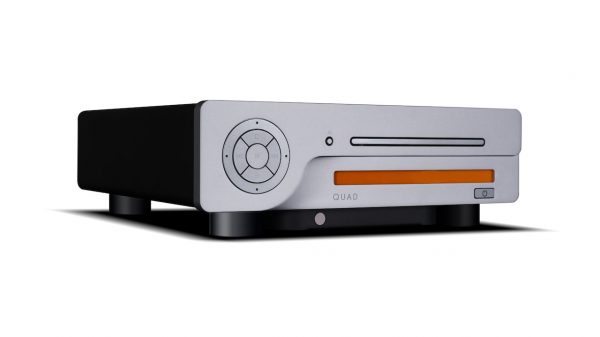
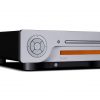





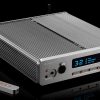
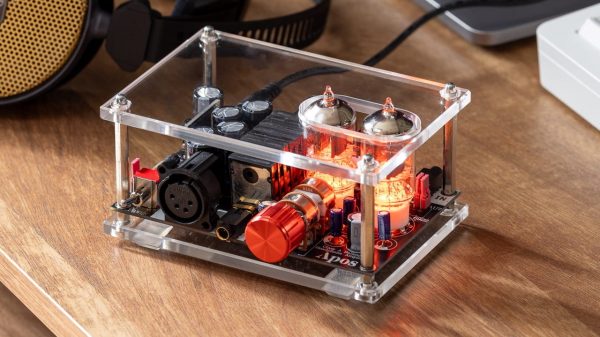












David
July 17, 2025 at 3:26 am
Ian,
I will confirm that HEOS does, even now, work with Tidal Connect. I’ve been using it for months now.
As is my personality, I have never been a collector or hoarder or supersizer. If I were to downsize as you are practicing in your life, I might be living in a teepee with a drum for musical enjoyment.
David
Ian White
July 17, 2025 at 11:09 am
David,
Good to know. Just getting started with the M1.
IW
ORT
July 21, 2025 at 2:26 pm
HEOS is the raison d’être for my choice(s) in audio equipment. The quality and affordability of Marantz/Denon are paramount to a part of my life and those whom I love. I like to give them something that is of use but has an ease of use. HEOS is just that.
I neither need nor desire to be a Roonatic. If others do, fine.
I do not use the current version of “gift” and “gifting” as in German the word “gift” translates to “poison”. I prefer the word “present”.
In this context it has two primary meanings both of which are meaningful for me. To be in the here and now and to give someone something. To give to a loved one a present freely, sans any recompense.
Curse my metal body. I am too S L O W. To paraphrase The Bard, If music be the food of love, life is on random play.
Be excellent to each other, my friends.
The ORTacle at HelFi.
Ian White
July 21, 2025 at 2:35 pm
ORT,
Learning how to use HEOS and I’m really liking the M1.
I dropped Roon.
Sir Ian